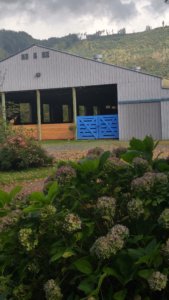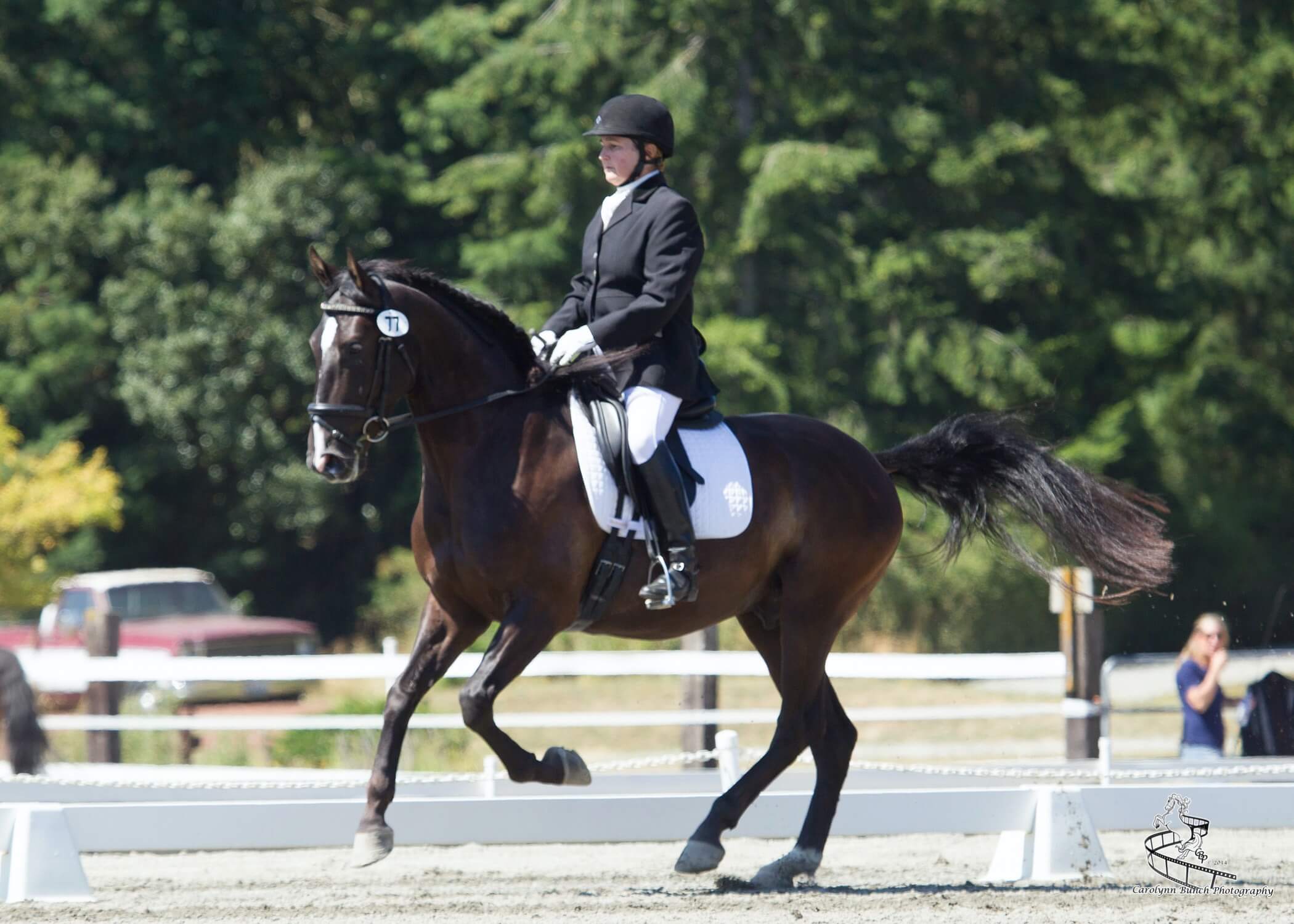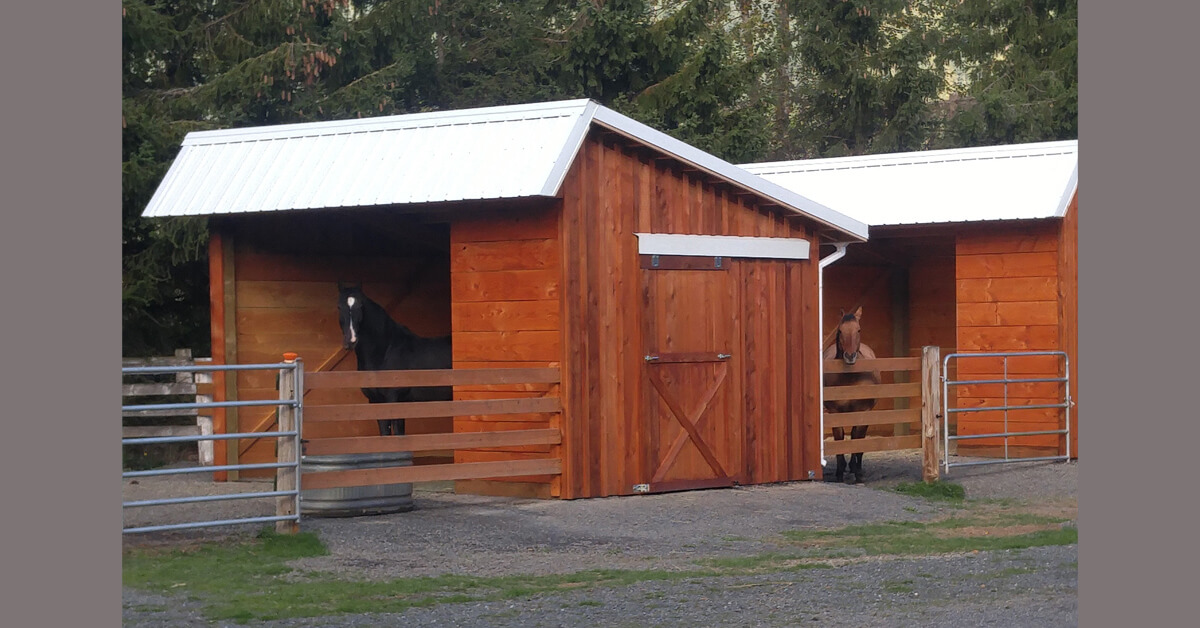Have you thought about taking on a few boarders to help make ends meet? If you keep your horses at home, it might seem like a way to make some extra cash. Or maybe you’re considering building or buying a horse facility and starting a business. Can you make a living boarding horses?
The reality is that boarding horses is rarely profitable. It does have some advantages though, like having someone to ride with or sharing the cost of a large load of hay. It also allows the cost of amenities such as new arena footing or a tractor to be spread out amongst a larger number of people.
Here’s a list of the expenses related to boarding horses. It’s worth noting that the more horses a facility cares for, the more the costs are spread out, and expenses such as insurance, property taxes, and tractor maintenance will be less per horse than I’ve noted here. Larger facilities can also employ more staff, which makes everybody’s lives easier.
Expenses are calculated per month, per horse, as most board is paid monthly. Expenses are those associated with horse care, facility upkeep, business expenses, and labor and reflect 2020 prices. The cost of buying and/or building a facility have not been factored in.
Horse Care
- Hay: Hay should be fed at a rate of at least 20 pounds per day. Many large or hard-working horses need more. This is 600 pounds per month, or about six bales of Timothy or orchard grass. Good quality Timothy or orchard grass is around $20.00 a bale by the time you get it delivered and stacked in the barn. You also need to factor in waste – moldy and weedy bales, dirty hay, etc., as there will inevitably be a few bad bales. That brings the expense of hay up to about $25.00 per bale or $150.00 per month.
- Bedding: Bedding pellets sell for $6.00 a bag when purchased by the pallet. Tax and hauling expenses bring them up to $7.50 per bag. If horses have access to the outside and matted stalls, your bedding costs will be less than those that are locked in box stalls. For horses with access to the outside, I figure two bags of bedding per horse per week, or eight bags per month. It’s more in winter, less in summer. Piggy horses take substantially more bedding. Eight bags of pelleted bedding per month is $60.00 per month. If you prefer shavings over bedding pellets add another $40.00 per month. Total is $60-$100 per month; let’s average that to $75.
- Concentrates (Grain/Senior Horse/Complete Feed): How much fed varies greatly depending on the horse. I figure an average of two pounds of concentrate per horse per day for a total of 60 pounds per month. Most concentrate feed is about $25.00 for a 50-pound bag. Total: $30 per month.
Facility Upkeep
This is where the expenses really start to take off. It’s extremely unlikely that you can make back the initial expenses of building barns, run-in sheds, installing drainage and gravel for paddocks, and putting up a covered arena or even a good outdoor arena with boarding fees. The goal is to make enough off the board to offset the expenses of maintaining those amenities.
- Fencing: My horses have large all-weather paddocks they access from rubber-matted stalls. These are surrounded by sturdy wood fencing – a necessity in smaller confined areas. These paddocks open up to large grass fields in good weather. Keeping horses this way cuts my labor down significantly, as I don’t have to lead horses in and out from their turnout every day.
My paddocks are 100 feet by 50 feet for a total of 300 feet of four-rail wood fence. Today’s cost for hiring a fencing company to build that fence is at minimum $25 per foot. Multiplied by 300 feet is $7500. I can hope for 15 to 20 years out of that fence (maybe) which equals $375 per year or $31.00 per month. Pasture fencing is a mix of field fence, electric/poly tape, and wood. This brings fencing costs up to at least $50 per month.
- Paddocks: In the Pacific Northwest it’s essential we have all-weather sacrifice areas for our winter/spring turnout. Depending on your soil, creating these areas can be a significant cost. I need to put one gravel truck load per year in each paddock for maintenance. One truck load of 3/8 inch rock is about $350. Divided by 12 months that’s about $30.00 per month.
Arena Footing: As with paddocks arena footing needs to be maintained and updated regularly. I figure $50 per month for each rider using the arena to pay for updates on sand, wood chips, or whatever is your preferred footing. This also includes electrical costs for lights when riders are using the arena and diesel to run the tractor and harrow for the several times per week the arena gets harrowed. Total $50 per month.
- Driveway Gravel: The more rigs coming in and out, the more often you need to update your driveway to avert mud and potholes. $10.00 per month.
- Tractor and other machinery: I’d be lost without my tractor to mow the fields, harrow the arena (the more it’s used the more you have to do this chore), move gravel and sand, move hay, pile compost, etc. All this stuff needs to be maintained and replaced when it wears out. I think it’s very fair to figure $30 per month.
- Miscellaneous: Buckets, manure forks, hoses, wheelbarrows, water troughs, and so on. Horses are great at breaking stuff. Figure at least $10 per month.
- Manure Removal: Depending on where you live this can be a significant cost. Some suburban areas require all manure removed from the property, which can cost thousands of dollars per year. If you can compost and spread on your own property, you’re still spending money on diesel, manure spreader, and a lot of labor time. You’ll also need to build and maintain a compost bin or storage area. Figure at least $30 per month but be prepared for it to cost more.
Business Expenses
These are the absolute necessities. Income taxes and employment taxes have not been figured in.
- Property taxes: If you have a large barn and indoor arena in Washington State, you’ll be paying at least $300 per month. Divide that by 10 horses: $30 per month.
- Insurance: You’ll need extra coverage for care, custody and control on any boarded horses as well as a commercial liability package. I pay $300 per month for this, but I also teach riding lessons and give some clinics, which brings the cost up. Still, let’s figure $30 per month.
Labor
Okay, let’s pause for a moment. Our total per horse expense is now at $525 per month and we haven’t figured in the cost of labor yet. How much do you want, per day, to take care of someone else’s horse? Think. You’ll be responsible every day for multiple feedings and daily manure clean up, water troughs and buckets need to be cleaned, and the arena needs to be worked and watered.
Have a wedding to attend? You’ll need to be home in time to feed. Want to go to a movie or out to dinner? Figure these activities around horse chores. If you go on vacation or to a horse show, you’ll need to hire someone to take care of your place (and all those horses). If you answered $20 per day per horse for your work you’ve now added $600 to your board bill for a total of $1125 per month. That’s a steep bill.
 I figure $7.50 per day per horse. Each horse/boarder takes about 30 minutes of my time each day, so I “pay” myself $15 per hour for the work. This comes to $225.00 per month. I do most of the work myself and only hire help when I’m gone or confronted with a repair that’s beyond my abilities. It’s worth noting that it’s very difficult to find someone willing to do this work for $15.00 per hour and stick around for very long.
I figure $7.50 per day per horse. Each horse/boarder takes about 30 minutes of my time each day, so I “pay” myself $15 per hour for the work. This comes to $225.00 per month. I do most of the work myself and only hire help when I’m gone or confronted with a repair that’s beyond my abilities. It’s worth noting that it’s very difficult to find someone willing to do this work for $15.00 per hour and stick around for very long.
Okay, so now our total is $720 per month per horse. There are a few facilities in my area that charge this much for board, but currently, I’m not one of them. I offset the cost of boarding horses by offering other services like lessons and training, but honestly, it’s a hard business. There’s no retirement, no health insurance, and it’s physically risky. (But good exercise!)
One solution I’ve found is to offer self-care board, but I’m very careful who I let do this. The boarder buys her own feed and bedding and cleans her own stall and paddock. I do the feeding and turnout. I’m still not making much, but it’s easier on my body and takes less of my time.
So why do it? Because we’re passionate about horses and we want to spend our days with them and other horse people. I love that I don’t have to sit behind a desk all day. I enjoy the time I spend with my boarders, many who are dear friends. Caring for horses is a lifestyle that nurtures my soul, if not my bank account.

Kim Roe grew up riding on the family ranch and competed in Western rail classes, trail horse, reining, working cow, and hunter/jumper. She trained her first horse for money at 12 years old, starting a pony for a neighbor.
Kim has been a professional dressage instructor in Washington state for over 30 years, training hundreds of horses and students through the levels. In recent years Kim has become involved in Working Equitation and is a small ‘r’ Working Equitation judge with WE United.
Kim is the editor of the Northwest Horse Source Magazine, and also a writer, photographer, and poet. She owns and manages Blue Gate Farm in Deming, Washington where she continues to be passionate about helping horses and riders in many disciplines.






